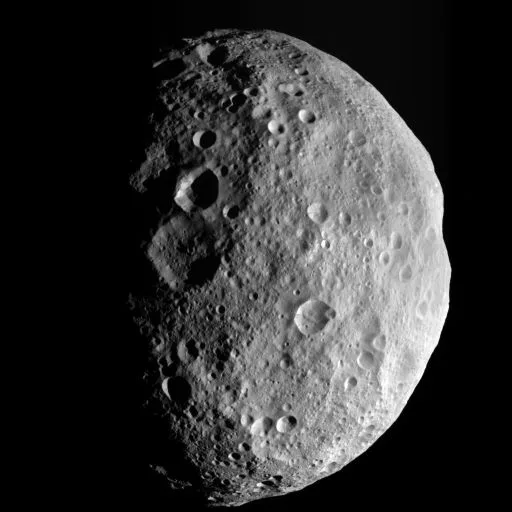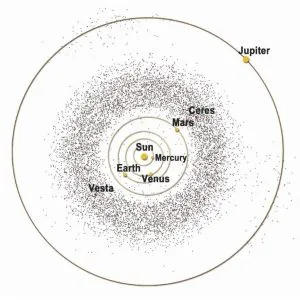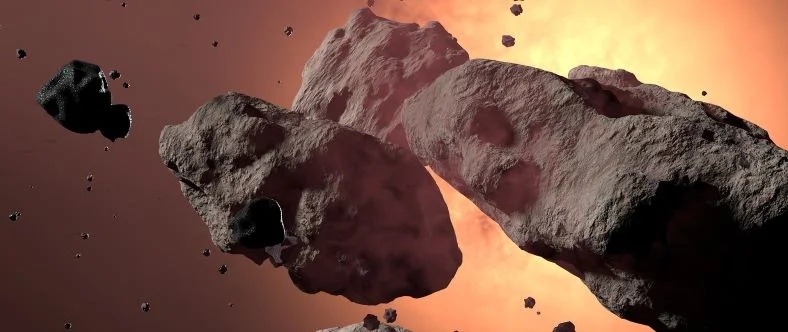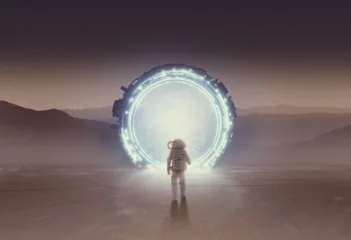Any news about asteroids hitting earth gives us goosebumps. Discoveries about space, solar systems, and planets always spark human curiosity. These are rocky bodies, basically small planets present in the inner solar system. This article will explore a few crucial facts related to these miraculous substances.
What are asteroids
In the wake of the solar system’s creation around 4.6 billion years ago, a series of airless particles known as asteroids were left behind. As per the reports by NASA, the present asteroid count is 1,113,527. These can range from the biggest bodies (such as Vesta) which are 530 km (329 miles) in diameter to bodies less than 10 m (33 feet).
The first of a kind named Ceres was discovered on 1st Jan 1901 by Gioacchino Giuseppe Maria Ubaldo Nicolò Piazzi. The discoveries have continued since then. Various notable people have contributed to the word “Asteroid.”
Asteroids= aster (like a star) + oid (to indicate similarity)

Composition of asteroids
These are classified into C, M, and S types.
- C-type: Chondrites (carbonaceous) are dark and are commonly found. These are composed of clay and silicate rocks. 10-Hygiea is a giant C-type asteroid.
- M-type: Metallics are made of nickel-iron. Different compositions of asteroids are due to their distance from the Sun. It is thought that some of these structures were formed and partially melted at high temperatures, in which iron sank to the center and caused volcanic lava to rise to the surface. 16 Psyche, 22 Kalliope, and 21 Lutetia are a few examples of M-type asteroids.
- S-type: Stoney ones consist of silicate materials and nickel-iron. 15 Eunomia is the biggest s-type asteroid.
Asteroid categories
Asteroid belt
A spherical portion between Jupiter and Mars orbits is known as the asteroid belt. This belt consists of 1.1-1.9 million asteroids that are large as well as small in diameter. At an early stage of the solar system, the gravitational pull of Jupiter blocked the formation of planets in this region and caused the small bodies to clash against one another, fragmenting them into meteors.
As per reports, this belt includes asteroids in the range of 700,000- 1.7 million with a size of 1 km. Around 62% of the total mass of the belt is accounted for by Ceres, Vesta, Pallas, and Hygiea.

Near-earth asteroids
They have orbits near to that of the earth. A total of 28,772 near-earth asteroids are detected as per the estimates. They exist for a few million years and are then ejected by planetary forces or bumped with other celestial bodies.
Recently, NASA issued a warning about a 260-foot-wide asteroid that will make its nearest approach to the earth.
Trojans
Trojans assemble at L4 and L5 points (lagrangian points) so they can share an orbit simultaneously with bigger planets while avoiding collisions. The Sun and the planet’s gravitational pull balance a trojan’s tendency to escape orbit otherwise. Among all trojan asteroids, Jupiter trojans make up the largest population.
What is Asteroid mining?
Humans have started their quest for new energy resources due to the increasing threat of natural sources depletion. Despite rapid progress in renewable energy, cosmic ventures hold a special place to cater to the demand of future generations.
In July 2015, an asteroid named 2011 UW158 was in close proximity to the earth. This is a trillion-dollar ($ 300 billion-5.4 trillion approx.) object that contained around 90 million tonnes of platinum along with other precious metals. This data is enough to realize the potential of this field.
Status of asteroid mining
Asteroids can be rich sources of water, precious metals, and rare minerals that can change the fate of mankind. Many established firms and startups are funded by tech tycoons. Deep space industries and planetary resources are considered to be the pioneers in space exploration projects. Recently, a California-based startup Astro-forge has managed to collect $ 13 million to book a space ride and is aiming to transform sci-fi movie visuals into reality.
Read more, 6 terrific explorations by Stephen Hawking.
How it could work practically
Many intellectuals across the globe are planning to accomplish this as soon as possible. A few proposed postulates are as follows:
- There are numerous asteroids in the solar system out of which only a few are valuable. Specifying them with useful resources can kickstart the process. To do that, an automated space vehicle should be launched to check its accessibility. Near-earth ones can be an easy target. They often cross the earth and their orbits intersect the earth’s orbit. This, in turn, will allow remote sensing techniques to understand their composition and develop RADAR images for analysis. This data along with their orbit composition, spin, and size will play a crucial role in determining valuable asteroids.
- Later, actual mining could be performed in an automated way. This concept focuses on developing an automated space vehicle along with a container capable of locating an area rich in resources. Upon completing that, the vehicle will be able to mine the targeted field, gather the extracted resources, and return to the surface where they will be utilized.
While this looks very fascinating, it is impossible to ignore a number of risks and challenges associated with this stream. Many people fear that devastating asteroid strikes will destroy the planet.
Until now, all space missions were dependent on fuel and other aids held by space shuttles and rockets, but this mining could drastically transform the space business. This will act as a backup in case the earth’s resources run out. The first asteroid mines are probably a long way off, but since this technology is still in its infancy, we should do our level best to conserve our natural resources.
Let us know in the comment section if you want to learn about any specific space entity.




[…] universe. It has been a prominent face in many space missions and captured views of black holes, asteroids, galaxy structures, nebulas, etc. Hubble has been the most productive telescope in history that has […]